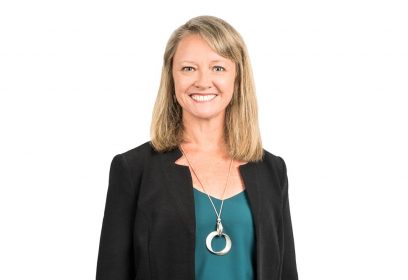A recent decision by the NSW Court of Appeal has given rise to hopes that the current interpretation of the words “competent professional practice” as they appear in section 5O of the Civil Liability Act 2002 (NSW) (the Act) may soon be revised. Two members of the judiciary commented critically on the standing interpretation of the words which appear in the statutory peer professional opinion defence, stating that it is too “narrow”. While the decision ultimately does not overturn or modify the interpretation, it begs the question as to whether judicial departure from the current interpretation awaits us in the near future, which would expand the ability for defendants to rely on the defence in a wider variety of circumstances. Meridian Lawyers Principal Nevena Brown and Associate Anna Martin discuss the key facts and findings below.
The case was originally brought by a patient suffering from a genetic disorder which affected the development of his spine, and in turn, his ability to breath. In September 2009 he was reviewed by Dr Randolph Gray (orthopaedic surgeon) who recommended surgical intervention to improve his respiratory condition, which would take place over two operations. Dr Gray explained the risks of the surgery to the patient and specifically mentioned “neurological injury including paralysis”.[i] The patient accepted that the first surgery would have the effect of compromising the blood supply to his spine, which would increase the risks associated with the second surgery. It was also noted that the second surgery would be a riskier procedure regardless, given the need to perform it with the patient lying face-down.
The patient agreed to proceed with the two surgeries, the first of which was performed uneventfully on 13 November 2009. It was anticipated that the second surgery would be performed 10 days later, however following the first surgery the patient’s lung condition deteriorated significantly. This gave rise to concerns about his prospects of survival and it was decided that the second surgery needed to be expedited to the evening of 17 November 2009.
The surgery commenced at around 7.30pm and was expected to take some 4 hours. Dr Gray was at the head of the surgical team, with Dr Chris Sparks acting as the attending anaesthetist. Both doctors would later take the role of defendants in the case brought by the patient.
From the outset of the procedure on 17 November 2009, Dr Sparks experienced difficulties managing the patient’s metabolic condition in the operating theatre. Although there are a number of indicators which can be used by an anaesthetist to monitor the patient’s condition during surgery, Dr Sparks gave evidence that he had resolved to rely on oxygenation saturation levels and blood pressure indications to determine whether he was sufficiently stable for the surgery to continue. He believed that that the nature of the circumstances was such that it was necessary to accommodate other adverse indicators in order to continue with the emergency surgery – in his words, the “risk of not going ahead exceeded the risk of going ahead”.[ii]
However, by 8.30pm, the patient’s CO2 levels had risen to the point that Dr Sparks recommended administering a muscle relaxant to assist ventilation. The levels remained elevated and despite attempting numerous techniques to improve the situation, at 8.50pm Dr Sparks resolved to call two colleagues to discuss the circumstances. Neither colleague could recommend any possible solutions that had not been considered and attempted by Dr Sparks already.
At 9.25pm, Dr Sparks believed that the patient was deteriorating and told the surgeons to hurry up. However, over the subsequent minutes the patient experienced a drop in blood pressure which prompted Dr Sparks to request the immediate termination of the procedure. Unfortunately, at 9.30pm the patient suffered an ischaemic spinal cord stroke which rendered him paraplegic.
The trial judge found that both Dr Gray and Dr Sparks had been negligent in their management of the patient’s surgery and that they were both responsible for his significant injuries. Neither defendant conformed to the relevant standard of care, the central basis of which was that in light of the adverse blood gas readings for CO2, they should have caused the operation to be terminated earlier than it was (and in so doing, would have avoided the patient’s significant cardio-vascular collapse and consequent paraplegia).
The trial judge found that Dr Gray had been alive to the problems encountered by Dr Sparks, and was aware of the metabolic deterioration in the patient which would have caused a reasonable, competent orthopaedic surgeon to terminate the procedure earlier. He rejected the proposition that Dr Gray was dependent upon Dr Sparks as to the assessment of the patient’s condition. Dr Sparks was found negligent in that he failed to advise that the surgery should have been abandoned no later than approximately 9.15pm (given that the paraplegia occurred after 9.15 pm and before 9.30 pm). Dr Sparks was alive to the patient’s metabolic deterioration and that a reasonable, competent anaesthetist in his position would have stopped the surgery. The patient was awarded damages of over $3.8 million.
Both Dr Gray and Dr Sparks appealed the decision on liability, arguing that the judge erred in finding that they had acted negligently and relying on sections 5I and 5O of the Act.
With respect to Dr Gray, the Court of Appeal unanimously upheld the appeal on the negligence finding against him, with specific reference to the fact that:
- As head of the surgical team leading a group of specialist medical staff, Dr Gray was entitled to rely on the other team members to perform their duties. In particular, he was entitled to rely on Dr Sparks to inform him of any matter of concern without Dr Gray making any inquiry.
- Critical to the primary judge’s finding of negligence, was that Dr Gray was being alerted to the problems encountered by Dr Sparks, however there was no evidence that Dr Sparks did so, and therefore no evidentiary basis for the findings.
- Dr Gray’s evidence regarding the information he received during the operation about the patient’s vital signs did not extend to his carbon dioxide levels.
When Dr Sparks advised termination of the procedure, Dr Gray promptly did so.
Dr Sparks was not so fortunate in the Court‘s assessment of his conduct, and therefore the lion’s share of this appeal related to the consideration of his professional performance and particularly with respect to the aforementioned provisions of the Act. Ultimately, he was unsuccessful on all grounds, however this article will focus specifically on the Court’s consideration of section 5O. That section reads:
5O Standard of care for professionals
(1) A person practising a profession (a professional) does not incur a liability in negligence arising from the provision of a professional service if it is established that the professional acted in a manner that (at the time the service was provided) was widely accepted in Australia by peer professional opinion as competent professional practice.
(2) However, peer professional opinion cannot be relied on for the purposes of this section if the court considers that the opinion is irrational.
(3) The fact that there are differing peer professional opinions widely accepted in Australia concerning a matter does not prevent any one or more (or all) of those opinions being relied on for the purposes of this section.
(4) Peer professional opinion does not have to be universally accepted
Counsel for the patient referred to the decision in McKenna v New England & Hunter Local Health District [2013] NSWCA 476 (McKenna) as providing the leading interpretation of this section, being:
To establish a defence under s 5O a medical practitioner needs to demonstrate, first, that what he or she did conformed with a practice that was in existence at the time the medical service was provided and, secondly, to establish that that practice was widely, although not necessarily universally, accepted by peer professional opinion as competent professional practice.[iii]
Counsel for Dr Sparks argued that McKenna was “wrong in holding that it is necessary to demonstrate the existence of ‘a practice’ extant at the time of the conduct in question.”[iv] Two out of the three Court of Appeal judges agreed.
Basten JA agreed, commenting that by reformulating the language of the section from “competent professional practice” to simply “a practice”, leads to an overly narrow interpretation. In his words:
To speak of ‘a practice’ adopted by a group of professional persons suggests a regular course of conduct adopted in particular circumstances. By contrast, the phrase ‘competent professional practice’ is apt to cover the whole gamut of professional services provided by the practitioner, whether or not the particular circumstances have arisen sufficient often to result in an established practice.
…
An expert might express an opinion that such conduct was not competent practice, not because he or she had experienced the same circumstance in the past, or had read about it in a textbook, but because basic principles of human physiology led to that conclusion.
Simpson JA also agreed that the McKenna interpretation is too restrictive, in that such an understanding limits the applicability of the defence to instances where the practitioner can point to both an established and discrete practice to aid his defence:
“…I would have considered that the language of s 5O makes it plain that “competent professional [here, medical] practice” is intended to denote “the practice of a profession [here, medicine]”, and not a specific practice or method of providing the professional services in question…
As construed in McKenna, s 5 O can apply only in limited circumstances, where the defendant can, or seeks to, identify a discrete practice to which he or she conformed. It necessarily excludes unusual factual circumstances, such as occurred in McKenna, and such as occurred in the present case. It does not appear to me that s 5O was intended to have such limited application.”[v]
Unfortunately, despite these views, the decision fell short of authoritatively expanding the interpretation so desired by judges. Although Basten JA did not consider himself bound by the McKenna decision,[vi] His Honour considered that the expert evidence relied upon by Dr Sparks nevertheless fell short of establishing a standard of competent professional practice widely accepted in Australia, in that that it did not “squarely address what became the critical issue, namely whether the failure to terminate the operation at an earlier point satisfied that test”.[vii] Conversely, Simpson JA believed that he was bound by McKenna. However he went so far as to say that, were he not, he would have upheld the appeal for Dr Sparks on the basis that his experts were unequivocal in their evidence that he had acted in a manner that at the time was widely accepted as competent professional practice. Further, no countervailing evidence was given on behalf of the respondent.
Macfarlan JA was on the original McKenna bench and therefore, unsurprisingly, upheld the reasoning in that decision (ie, that the defendant must be able to demonstrate a particular point of established medical practice, such as the use of a particular drug, surgical technique or item of surgical equipment, in order to rely on the defence). In His Honour’s words:
“Expert evidence that says no more than that the expert considers the defendant to have acted reasonably, and in a way that would be widely regarded as acceptable, is insufficient to establish the existence of a “practice” for the purpose of section 5O.” [viii]
Leaving Macfarlan JA’s reasons to one side, the Court’s criticism of the McKenna interpretation is notable and unequivocal. It begs the question as to whether a revision of the current interpretation may be forthcoming, once a subsequent case on point resolves to push the matter further. If it does, defendants who seek to rely on the defence in the future, but whose conduct took place in peculiar or unexplored factual circumstances, will nevertheless be given an opportunity to lead expert evidence which considers such circumstances and reasons from first principles as to whether the conduct was, or was not, competent professional practice widely accepted in Australia.
This article was written by Principal Nevena Brown and Associate Anna Martin. Please contact us if you have any questions or if you would like further information.
Endnotes:
[i] Sparks v Hobson; Gray v Hobson [2018] NSWCA 29 at 252
[ii] Ibid, 130.
[iii] McKenna v New England & Hunter Local Health District [2013] NSWCA 476 at [160] (emphasis in original).
[iv] Ibid, 30.
[v] Ibid, 335 – 336.
[vi] This was because it had been subsequently overturned by the High Court, albeit on a different point of law, without approval for the Court of Appeal’s reasoning regarding section 5O (see paragraphs 36 to 40). As such, Basten JA was of the view that the component of the McKenna decision regarding section 5O was no longer binding.
[vii] Ibid, 77.
[viii] Ibid, 223.




